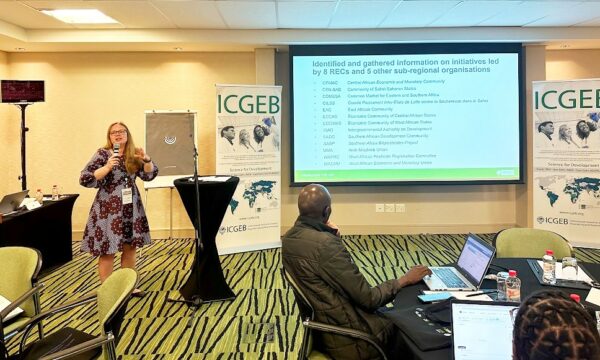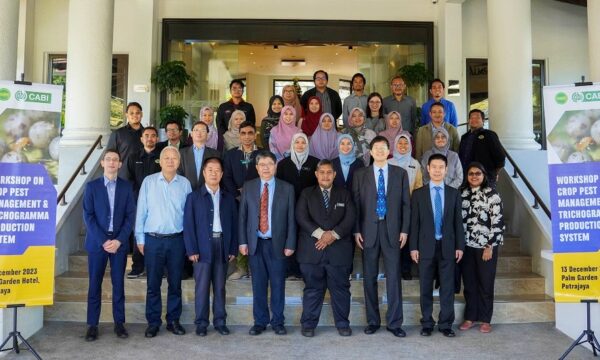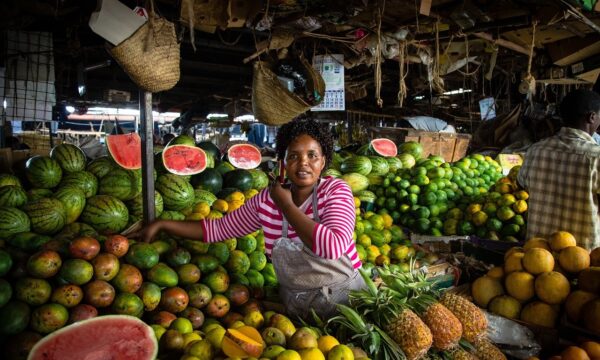The drastic rises in prices of food during 2007-2008 had severe consequences, but could such rises present an opportunity? Antonio Martuscelli believes “High food prices in the short-run are very damaging for low-income groups of the population in developing countries. At the same time, high prices are an incentive for producers and extremely important for generating an aggregate supply response and to re-establish a long-run equilibrium.” His work is published in CAB Reviews in the run-up to CABI’s Global Summit on “Food Security in a Climate of Change” in London, 19-21 October.
Martuscelli, of the University of Sussex says that it is vital that short- and long-term issues are balanced. “The problem of high prices of basic food commodities exposes governments and societies to a great challenge that can only be addressed by means of a comprehensive food policy for the coming years. The challenge is to address the adverse impact of high food prices in the short run without compromising the long-run equilibrium of agricultural markets.”
Martuscelli’s views are published in one of a series of papers in CAB Reviews (listed below) on the food crises published over the last few months. These reviews look at issues such as the extent to which diversion of resources to biofuel production could be a factor.
David Bigman of Wageningen University, Netherlands, notes in his paper that “The food crisis was followed by a financial crisis that had rippled effects in most developed and emerging economies and deteriorated into a global recession that deepened poverty and malnutrition in many countries. According to World Bank estimates, nearly 150 million people became poor as an effect of these crises and reversed the achievements that the least developed countries had in the preceding decade.”
Laura Rossi of the National Institute for Research on Food and Nutrition, looks at how emergency food aid is prioritised. “Selective feeding programmes aimed at reducing the prevalence of acute malnutrition are mainly addressed to infant and young children and pregnant and lactating women. Other population groups, such as elderly or HIV infected adults, could be at risk in food crisis. In fact, while targeting malnourished persons follows strict scientific rules, the detection of ‘poorest’ or ‘most vulnerable’ families in a given area required a most complex analysis that has to include also well-structured methods of community participation.”
Matias Margulis from McMaster University, Canada, thinks that the crisis may create demands for modifications to the global governance of agriculture and food. “For example, states may increasingly seek to modify bilateral and multilateral economic agreements to ensure domestic food security is prioritized over economic gains and efficiency.”
Shelly Sundberg says that agriculture in Africa has been neglected by African governments and donor institutions for the last two decades. “A substantial increase in resources devoted to agricultural research will help the sector realize its anticipated potential for productivity gains. Complementary interventions are needed to ensure that overall economic gains translate into improvements in the lives of the poor.”
Peter Gregory from SCRI, UK and John Ingram from the University of Oxford look at the extent to which climate change has contributed to food price volatility. “Distinguishing climate effects from changes in yield resulting from improved crop management and genotypes is difficult, but phenological changes affecting sowing, maturity and disease incidence are emerging.” They conclude that changing climate is a small contributor to the current food crisis but cannot be ignored.
Kwadwo Asenso-Okyere and Suresh Babu of IPFRI, USA, review a set of technological tools that might be used to combat the increasing problems of agriculture. “The recent food crises may be a blessing in disguise in increasing the investment in agriculture research and development for appropriate response in innovations in the food and agriculture value chain. There is a call to double investment in public agricultural research from US$4.6 billion to US$9.3 billion to bring about substantial growth in agriculture in the developing world. Yet countries may not receive the full benefit of the increased investment if they do not have national systems of agricultural research including, technical/vocational education, and extension systems, which are effectively organized and managed.”
Natalie Valpiani of the Friedman School of Nutrition Science and and her co-authors focus on Latin America and the Caribbean, noting that food price rises erode purchasing power, exacerbating micronutrient deficiencies and malnutrition across the region. “An expanded nutrition security programme is urgently required for mitigating the negative effects of the food crisis and prevent long-term repercussions on health and development,” they write.
The CABI Global Summit next month will consider policies, practices and technologies that can help improve food security against a background of change. Themes include the following:
For further details, email admin@cabiglobalsummit.com
CAB Reviews papers on food crises and security
Trends, drivers and impact of high food commodity prices
A. Martuscelli
CAB Reviews: Perspectives in Agriculture, Veterinary Science, Nutrition and Natural Resources, 2009, 4, No. 050, 34 pp.
The causes and consequences of the food crisis
D. Bigman
CAB Reviews: Perspectives in Agriculture, Veterinary Science, Nutrition and Natural Resources, 2009, 4, No. 040, 27 pp.
Targeting the most vulnerable in the food crisis
L. Rossi
CAB Reviews: Perspectives in Agriculture, Veterinary Science, Nutrition and Natural Resources, 2009, 4, No. 043, 8 pp.
Multilateral responses to the global food crisis.
M. E. Margulis
CAB Reviews: Perspectives in Agriculture, Veterinary Science, Nutrition and Natural Resources, 2009, 4, 012, 1-10
Agriculture, poverty and growth in Africa: linkages and policy challenges.
S. Sundberg
CAB Reviews: Perspectives in Agriculture, Veterinary Science, Nutrition and Natural Resources, 2009, 4, 005, 1-14
Climate change and the current 'food crisis'.
Gregory, P. J., Ingram, J. S. I.
CAB Reviews: Perspectives in Agriculture, Veterinary Science, Nutrition and Natural Resources, 2008, 3, 099, 1-10
Technological tools to address the food crises.
Asenso-Okyere, K., Babu, S.
CAB Reviews: Perspectives in Agriculture, Veterinary Science, Nutrition and Natural Resources, 2008, 3, 100, 1-11
Valpiani, N., Thorne-Lyman, A. L., Pee, S. de, Godfrey, S., Gentilini, U., Bloem, M. W.
CAB Reviews: Perspectives in Agriculture, Veterinary Science, Nutrition and Natural Resources, 2008, 3, 081, 1-12
Related News & Blogs
CABI shares its expertise at ICT for Development (ICT4D) Conference
CABI has shared its expertise in digital development for improved livelihoods and greater food security at the 12th Information Communication Technology for Development (ICT4D) Conference held in Accra, Ghana. Katherine Cameron, Head of Digital Advisor…
26 March 2024




